This is the moment I’ve been waiting for. I rip off the plastic packaging, tighten my fingers around the mortarboard and unfurl my $77.10 graduation gown, in all its overpriced glory. I turn towards my roommate of four years, Olivia.
“It’s huge,” I say. “Kind of like an oversized T-shirt.”
Olivia slides her arms into the sleeves. They billow around her petite body, making her look like a five-foot-tall judge in a red robe.
“It looks like a costume,” she says.
I wish that were true — that it is a costume, that we’re just playing pretend — because I am more afraid than I have ever been. In one week, I will graduate from Stony Brook University and leave behind the four greatest years of my life.
There were so many “firsts” in those four years — my first kiss, my first all-nighter for a final exam, my first study abroad adventure. I lost my childhood best friend, and I bawled my eyes out in front of a professor. But there is very little that I regret, and for the things that I do, I’d relive them once more just to stay at Stony Brook a little longer.
It all goes back to August 22, 2014, my first day of college.
I took a selfie on that car ride to Stony Brook. I wore a white peasant top under a black hoodie, that’s now a size too small. A red lanyard keychain embroidered with the words “Stony Brook University” dangled from my neck. And, quite noticeably, my face was thinner.
“Love makes you fat,” my mom told me later that year. She wasn’t lying.
We arrived at Stony Brook University in the early afternoon. The sky was cloudy, and the trees were a deep, verdant green — even more so in Tabler Quad, where I would live for the next two years. My family and I unloaded my things from our minivan to my new home — a cramped, cube-like room with two identical twin-sized beds, desks, closets and nightstands.
We didn’t know how to say goodbye. What do you say to your daughter after seeing her every day for the past 18 years of your life? My dad was sitting on my dorm’s patio, legs dangling off the brick ledge. It was uncannily quiet. I took a picture of him sitting there, staring into space. I’ve always wondered what he was thinking about.
He had been elated when he found out I got into Stony Brook’s Honors College program. When he came home from work that day, I was waiting in our living room, with the acceptance letter in my hands. Before he set down his briefcase, before he could say more than “I’m home,” I leaped to his side.
“Daddy, Daddy, guess what!” I yelled. “I got into the Honors College!” He let out a gigantic roar. I hadn’t heard him yell that loudly since 2005, the year we rode El Toro at Six Flags.
And it was there, in the Honors College, where I met the boy to whom I first uttered the words, “I love you” and meant it, the man I lost my virginity to — the person who knows me better than anyone else.
It was not love at first sight. We met in a black box theater at the Honors College orientation, the first day of freshman year. I saw him across the room, wearing a gray T-shirt and dark, thick-framed glasses. He looked like an average Asian-American kid who fit all the stereotypes — bookish, quiet and nerdy.
“Hi, my name is Kaiter,” he said. Kaiter. Like…a guy who flies kites? I thought. His name stuck with me.
Over the next three weeks, we became closer. We played Cards Against Humanity on his dorm room floor with our roommates. I heard him play “To Zanarkand” on the piano, and downloaded the song onto my iPod a few hours later. The night of the first homecoming game, I ran into him on Tabler Steps, and we traded our phone numbers.
We texted each other every day. We talked about many things: my fear of spiders, our families, our high school proms. And then, three weeks later, we sat in the grass outside our dorm in forty-degree Fahrenheit weather, and confessed our growing confusion under the starlit sky: We were friends, but not quite. What are we? On September 16, we made “us” official.
More than three years have passed since that day. It is impossible to synopsize our story — every adventure, every trip, every single fight — but I will tell you this: I have never loved someone else the way I love Kaiter, and I don’t think I ever can, or ever will.
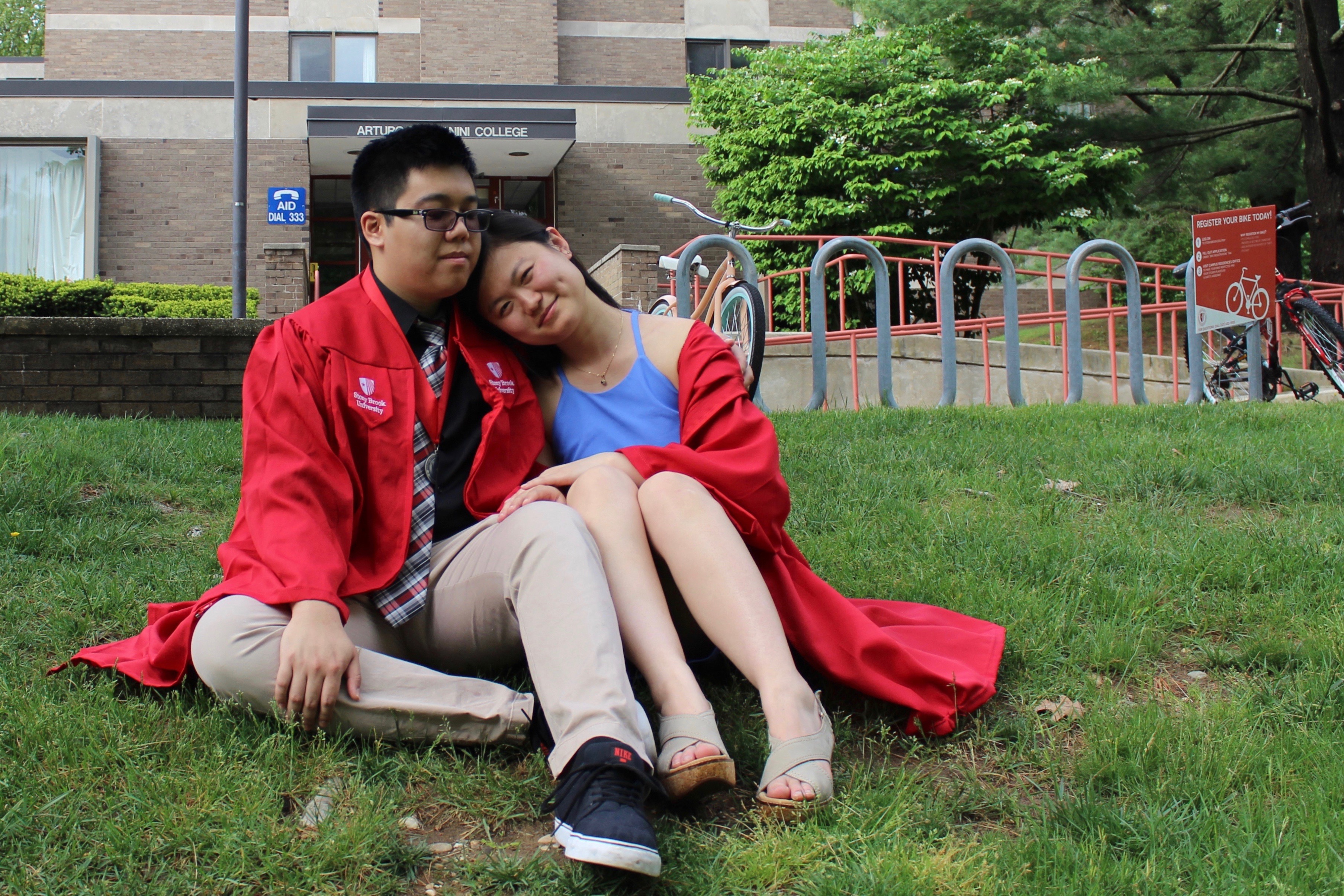
Yet my favorite memory from college is, ironically, not with him.
It was a cool, late September night from freshman year, and I was exploring campus with seven or eight students from my dorm. We were a motley crew: There was Carlos, Corbin Bleu’s doppelganger, who walks barefoot around campus and used to carry a drinking gourd that was as big as his afro; there was Tim, a geeky white kid from Westchester who has become one of my best friends; and there was Chris, a tall, hulking 18-year-old with glasses who looks like a lumberjack when he doesn’t shave.
We bought burritos from the student union. If you bought them after midnight, they were only about two dollars. Then we walked to Staller Steps, a 70,000-square-foot terrace lined with seven tiered lawns. Someone began to dance along the steps. Then, out of nowhere, the outdoor sprinklers sprang to life. I raced up the steps, waving my hand in and out of the water. I was wearing a long-sleeve shirt, but the water was delightfully cold and I couldn’t care less about getting wet. All my dreams were coming true: I was making friends, I was exploring unfamiliar territory without my parents’ knowledge and I was pumped with post-burrito adrenaline.

When my legs grew tired, I laid on the grass at the bottom of the steps with everyone else. That night, the sky was so clear. You could see more than a dozen stars, and if you lay still and stared at them with a laser-beam focus, you could see them shimmer. I don’t remember how many minutes passed. But before we sat up and returned to our rooms, a miracle occurred – a shooting star. It happened so swiftly that if you blinked once, you might have missed it.
I have forgotten the words we exchanged that evening, and I no longer speak with most of those friends from freshman year. But in that moment – in that night – we indulged in an emotion that lasts only four years, but lives with us for a lifetime: the fleeting euphoria of a young, 20-something college student.
My second favorite memory from college did not take place on campus. It happened in South Korea – the country where my parents, grandparents and great-grandparents were born.
It was the summer of 2016, a few months before my junior year began. I was in South Korea for a three-week study abroad trip through the Stony Brook University School of Journalism.
Wandering throughout the streets of Seoul, I read all the signs in Korean characters, though I usually had no idea what they meant. I came as close as possible to North Korea, the country my grandparents escaped from decades ago. And I tasted my Halmoni’s cooking in a small, cozy restaurant a few blocks from the university where I stayed.
The memory I speak of did not take place in a karaoke bar, a restaurant or a random street. I was climbing the stairs of a subway station with six other journalism students when I noticed the color of the sky. While we were underground, the sky had faded from deep blue to dusky rose. Everything touched by the sun – the road, the street signs, the strangers on the sidewalk – was aglow with the rosy, warm light that prophesies a stunning sunset. It was going to be incredible.
I sprinted for the nearest accessible rooftop. When I finally reached the top, I was wide-eyed and wheezing, with my hands on my knees. I was alone; no one had caught up with me yet. Then I looked up.
You could see the skyline of Seoul stretch for miles, lit by neon building signs and a steady stream of car lights. Behind the cityscape were the slopes of the eggplant purple mountains, low and majestic along the horizon. And above all of that was the sky, awash with a palette of pink and periwinkle hues. The clouds – it was as if God had plucked a piece of cotton candy off a stick, pulled it apart and patted it into the sky.
I had no words. I was grateful to be alive, to bear witness to this breathtaking view. I wondered if my ancestors had seen it, too.
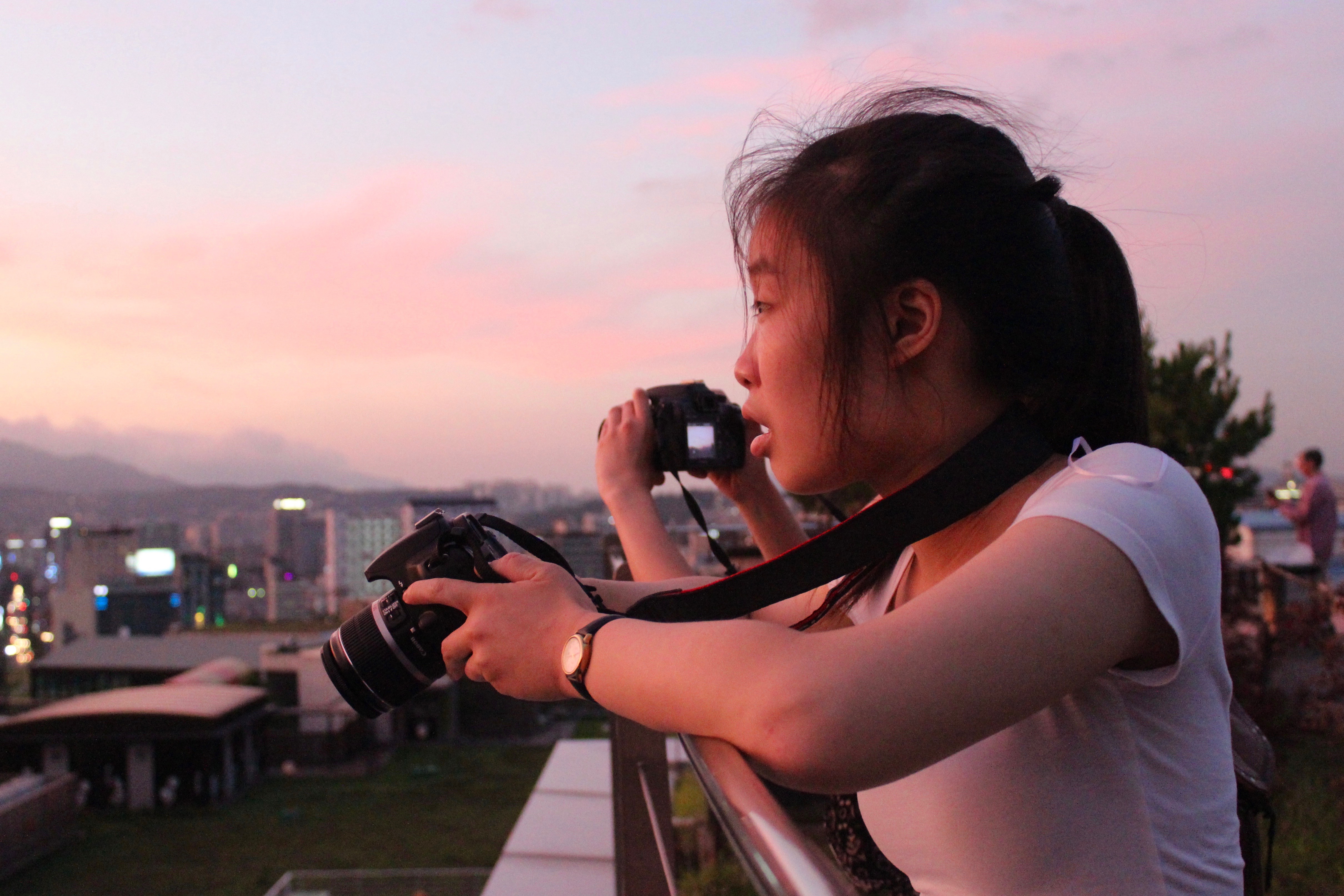
The following year, I would experience my lowest moment in college. It was spring semester of my junior year, and I was taking a class called Journalism Judgment and Ethics. Students are required to write three fifteen-page case studies and a final semester project. The course was infamous for one reason – the “Accuracy F” policy. If you make a single factual mistake in one of the papers – misspell a person’s name, write the wrong date, misinterpret a concept – you get an F.
I remember the day I got my first case study grade back. I was standing outside the classroom with the rest of my classmates, waiting to retrieve my case study. It was sitting in a plastic box filled with black file folders, each labeled with our last names.
“You look at it first,” said someone behind me. I gingerly opened my folder, clenched the corner of my case study and pulled it out. I exhaled. There it was, under the glare of the hallway light – a neat, red capital “A.” Then I froze. There was more writing scrawled across the front page: A red line slashed across the “A” and those awful, taunting words: “This is excellent!!! But Accuracy F. See ‘cloak.’”
At first, I felt okay. I got an F. I could accept that. Mistakes are normal. Then the person teaching the class, Paul Schreiber, came up to me and said those three damn words: “Are you okay?”
I began bawling my eyes out. And once my tears are triggered, they don’t stop.
In retrospect, we were a funny sight. There I was, sitting on one side of the table, sobbing and hiding my blotchy, tearstained face with my folded case study, and on the other side was Professor Schreiber, patiently holding a tissue box and peering at me behind his wire-rimmed glasses.
I learned three things from that day: 1. Don’t be afraid to fail. 2. Stop being so sensitive. And 3. Crying in front of your professor is not that big of a deal.
But throughout my four years of college, there’s something more important I have learned about myself. You, my dear reader, are probably wondering, “What did she actually study?”
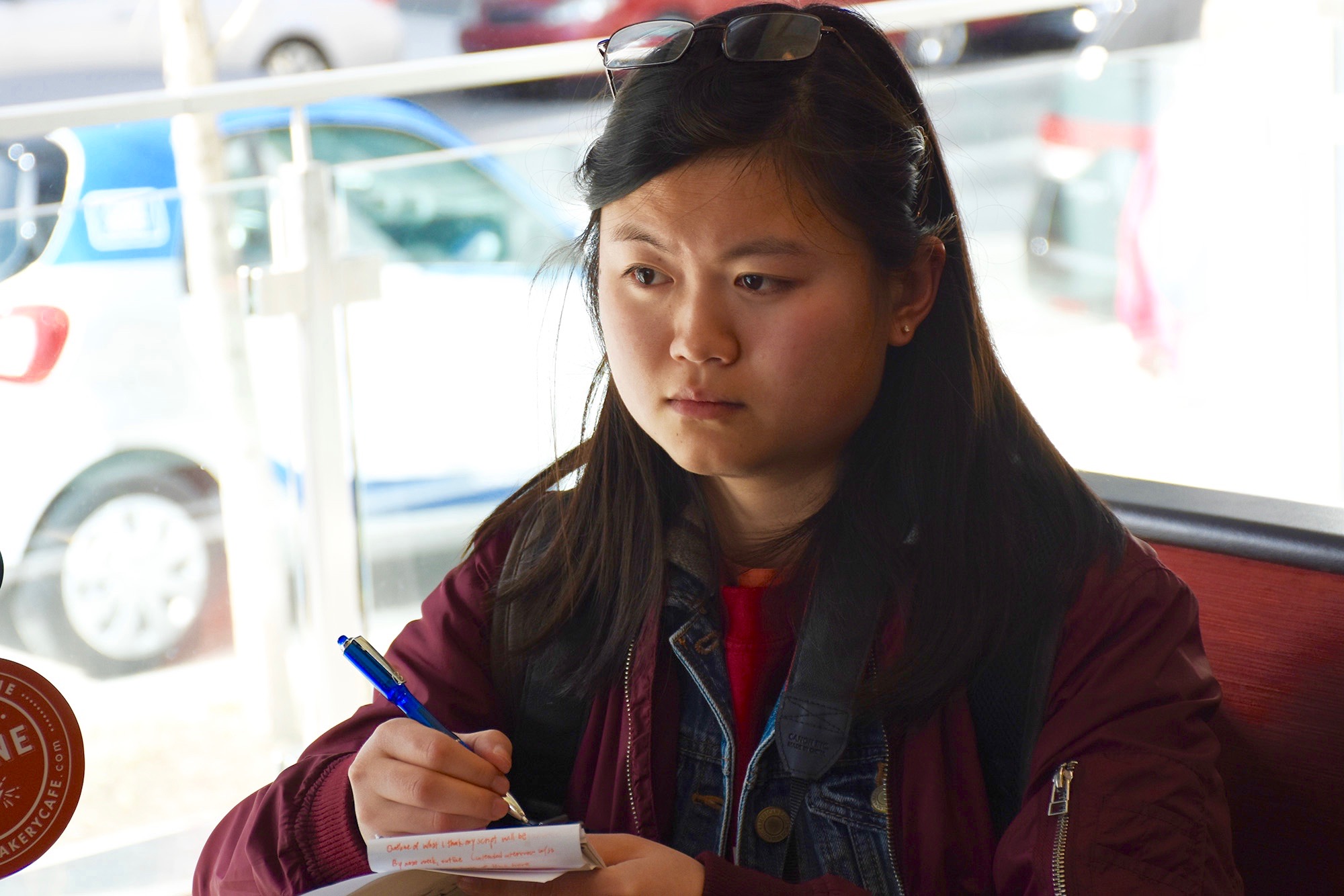
I became someone I had never imagined – a journalist. As a child, and even as a teenager, I lumped all journalists together. I thought they all had the same personality – that they were all supposed to be loud, pushy and provocative. Every anchor, every reporter I saw on TV, was aligned with that personality profile. And I’ve always been shy.
But throughout my four years in the SBU School of Journalism, my professors have shown me that there are all kinds of journalists. There are narrative journalists like Irene Virag, sweet and short and humble, who have a way with words. There are obituary writers like Paul Vitello, endearingly awkward and clever, who can capture the essence of people they have never met. And there are reporters like Charles Haddad, quirky and comical, who have opened my eyes to the part of journalism I fell in love with – the power to tell stories that touch our hearts. I saw pieces of myself in all of them. And then it hit me: I’m allowed to be a journalist – a narrative and visual storyteller – too.
Yet in my last days of college, I have been thinking less about journalism, and more about the people I have met these past four years.
I have been contemplating my future with college friends, particularly my study abroad mates – Chereese, Cosette, Dyondra, Jessica and Justine – the “Koreaboos,” as Jess has dubbed us. If we had not bonded in South Korea, we probably would not have become friends. I was skeptical that we would stay friends, 10 or 20 years from now. But two weeks ago, I had a change of heart.
I was sitting in the School of Journalism’s newsroom, in the corner of the campus library. I was helping Jess edit her on-camera video interview for a video shown at the annual end-of-the-year School of Journalism banquet: a video clip collection of sappy, sentimental confessions from graduating seniors. I placed the headset over my ears, pressed play and listened to everything she had to say – her advice for current journalism students, her favorite memory from the J-School, the things she’ll miss the most. And midway, I began to cry. Like, really cry – big, fat crocodile tears and howls and all. Because Jess said, “My most memorable moment in the J-School is kinda cliché and cheesy to say, but I think meeting my Koreaboos.” She smiled, and then looked away from the camera. “I really feel like they’ll be friends I’ll have for a lifetime.”
So I have decided to stay hopeful. In my last days of college, I have been making one-minute videos of adventures with friends – dancing and drinking at Schafer’s after dark; strolling along West Meadow Beach at sunset; and hiking beside Avalon Park’s flora and fauna. I want to remember everything – the conversations, the things I see, the things I hear – and relive them with a crystal-clear memory.
Last Friday, three of the Koreaboos and I woke up to see the sunrise. We boarded Jess’s minivan around 5 a.m., as the night sky brightened to a cobalt blue. It took 15 minutes to drive to our destination, McAllister County Park. I had been there before, but not to see the sunrise. It is a 113-acre stretch of sand dunes, stones, trees and marshes on the north shore of Long Island. On one side is the quiet bay, protected by a bulwark of sand dunes; on the other is the Long Island Sound, an stretch of white-capped waves and sea. To see the sunrise, you need to walk a few yards along the perimeter of the bay and clamber up the sand dunes, some as steep as forty-five degrees.
We reached the park about fifteen minutes before sunrise. The sky was a dusky blue, and the sand was steadily becoming brighter. I was determined to film the moment the sun broke the horizon.
“C’mon guys, let’s go!” I yelled, jogging along the bay. They trailed behind until I could only hear their distant laughter and moans, but I don’t blame them – two of them hadn’t slept at all, and it was 5:30 a.m. I clambered up the sand dune in my socks and sneakers. With every step, a little more sand shook into my shoes, and the time between each breath quickened. I laughed. It was déjà vu: Leaving my Koreaboos to see the sunrise/sunset, the reminder that I need to exercise more, the adrenaline rush.
And then, once more, I was on top of the world.

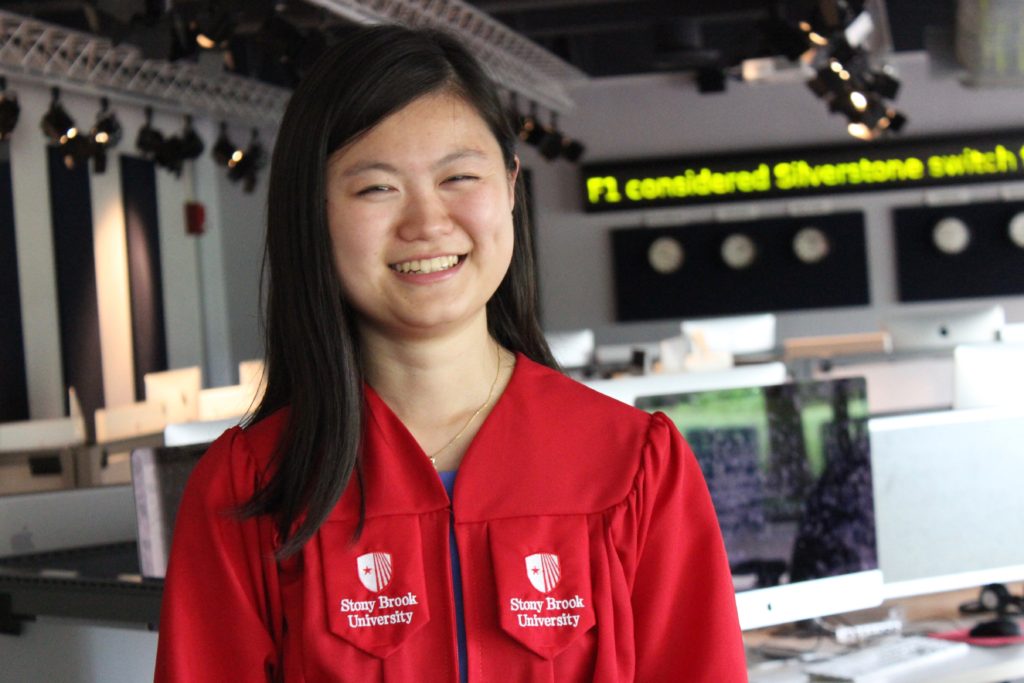

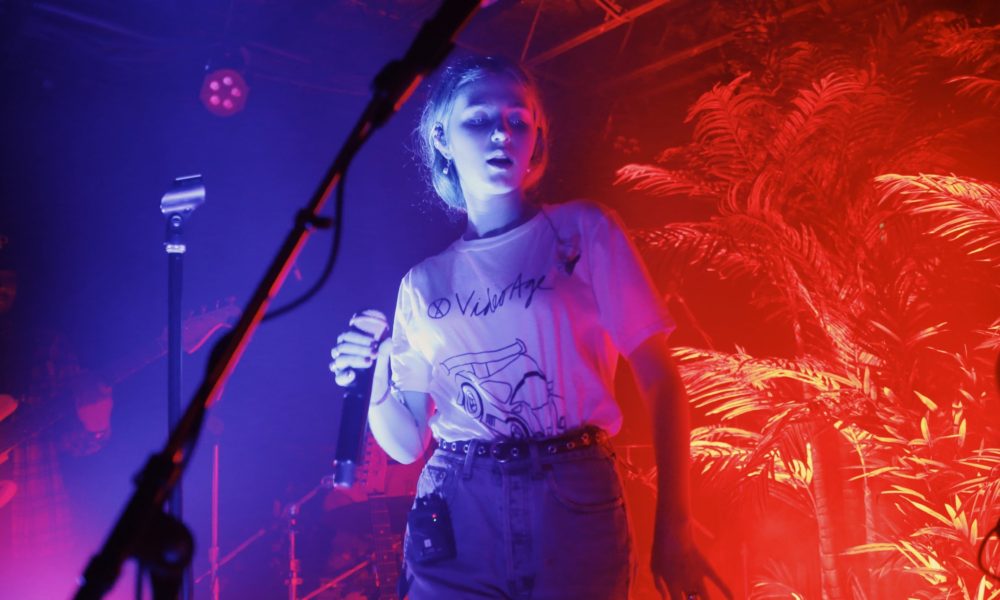
Comments are closed.